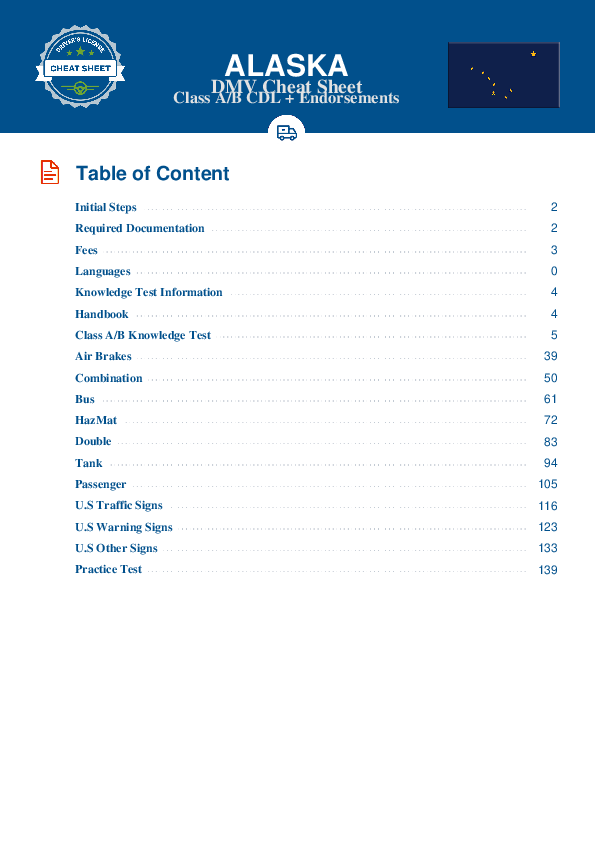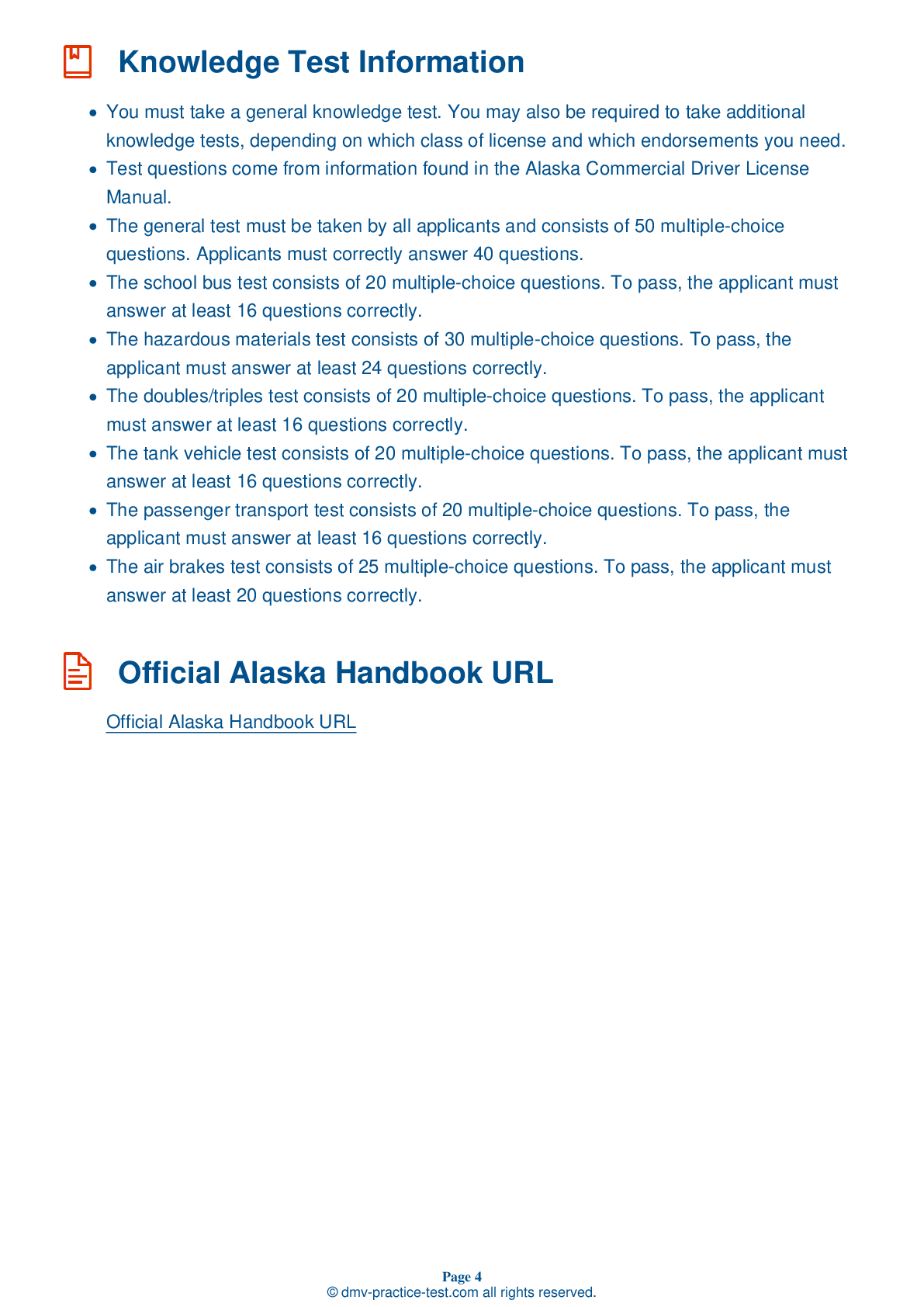Class B Driving Test | Alaska 2025 #1 Page 3 of 7
Train for FREE online with our Alaska class B license test. The official exam test consists of several obligatory parts, with all of them checking your knowledge of different blocks of road rules. If you need to obtain a AK CDL class B permit in 2025, practice as much as possible. Free sample tests published on our website will help you check and improve your knowledge and boost your grades. Please bear in mind that CDL class B requirements may vary from state to state.
15 . A DUI conviction will result in loss of license for a minimum of:
A first-time DUI conviction will result in the disqualification of your CDL for at least one year. A second offense will result in a lifetime disqualification.
16 . When traveling at speeds under 40 mph, you should maintain at least ____ of following distance for every 10 feet of your vehicle's length.
When traveling at speeds under 40 mph, you should allow a minimum of one second of following distance for every 10 feet of your vehicle's length. At faster speeds, add at least one additional second.
17 . Poisonous fumes can enter a cab due to:
A faulty exhaust system is a serious safety hazard. It may allow poisonous fumes to enter the vehicle's cab or sleeper berth.
18 . When accelerating on a surface with poor traction, such as a wet road, a driver should:
You should accelerate very gradually when driving under conditions that create poor traction.
19 . When stopping, the brake pedal should be:
When stopping, it is best to gradually press down the brake pedal.
20 . Which of the following is not an indicator of when to upshift?
There are two indicators that determine when you need to shift into a higher gear. One indicator is the engine speed (rpm). You should read your vehicle's manual to learn its rpm range and shift up when you reach the top of that range. The other indicator is road speed (mph). You should learn which speeds each gear can accommodate, then keep an eye on the speedometer and shift up as needed.
21 . If traveling at 55 mph on dry pavement, your minimum braking distance will be close to:
Your vehicle's stopping distance can be calculated by adding together your perception distance, your reaction distance, and your vehicle's braking distance. When traveling on dry pavement with brakes that are in good condition, your braking distance will be about 216 feet.
See the exact questions that will be on the 2025 Alaska DMV exam.
99.2% of people who use the cheat sheet pass the FIRST TIME
Lillian MCcranie explains how our CDL study guide was helpful in passing the exam and recommends it to everyone.
Cameron tells us how he purchased the CDL exam, and found it to be a useful tool which helped him pass the exam and find a job.



